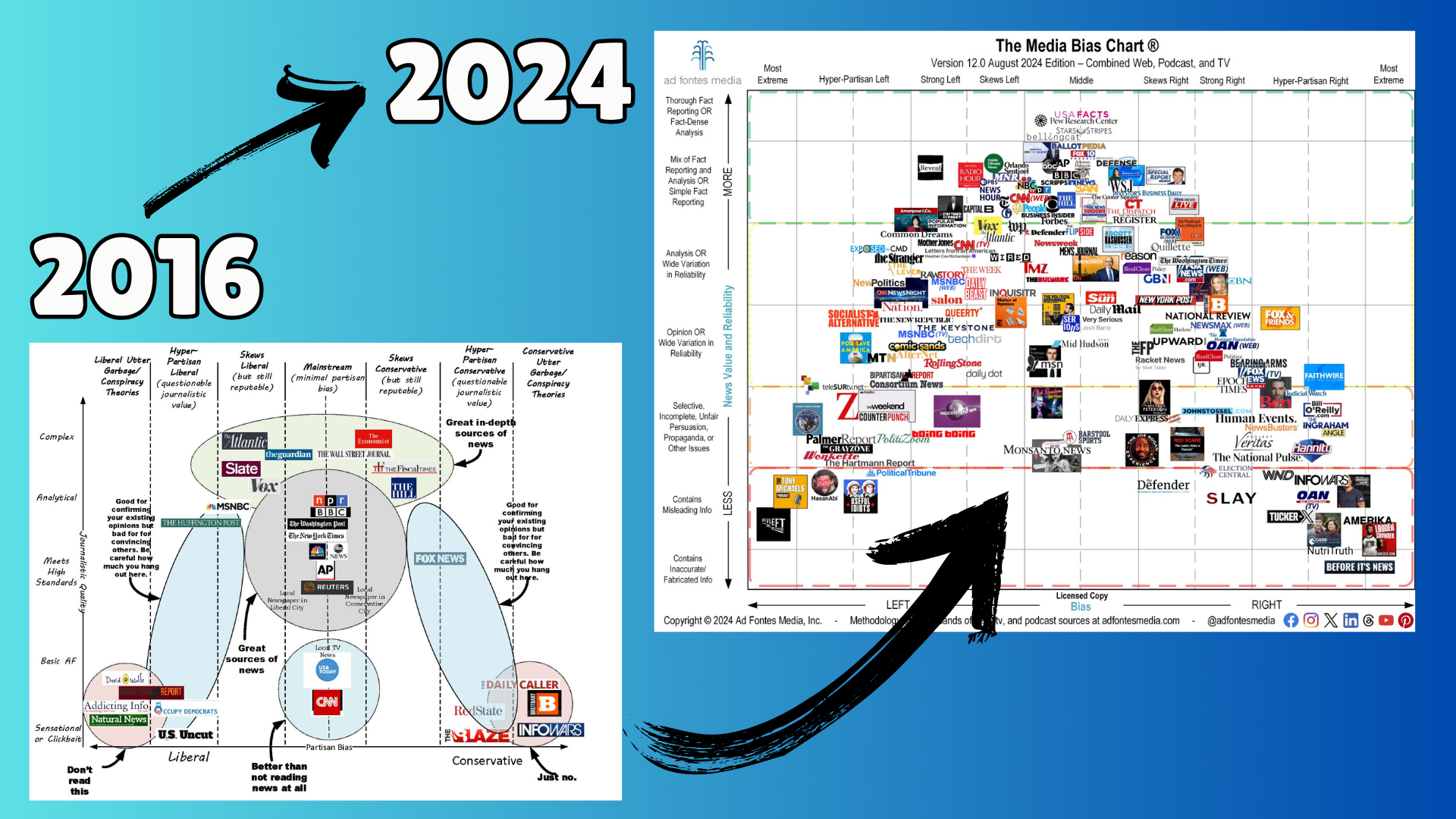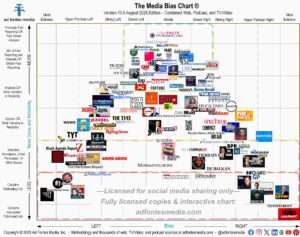
Three Presidential Elections and Eight Years of the Media Bias Chart
Author:
Vanessa Otero
Date:
10/08/2024
It’s been about eight years since I published the first Media Bias Chart®. It was right before the 2016 election in the heat of Hillary vs Trump. People ask me if things have gotten better or worse in the information ecosystem in those last eight years.
Things are definitely different, with some things worse and some things better.
What’s different:
Social fragmentation: In 2016, Facebook’s News Feed was the dominant place for relatives and friends, and Twitter was the place for journalists, politicians and strangers to fight about politics. Facebook’s News Feed is no more, and Twitter is now primarily social media for the right.
Political social media conversation has splintered to different networks, with a chunk of the left now on Threads. Our social media conversation is more fragmented.
News source fragmentation/proliferation: Our news/information content media sources are also more fragmented because the barrier to entry for individual contributors has continued to come down as technology advances.
Other tech and market forces have resulted in the closure of newsrooms. More YouTube Channels, Substacks, and podcasts, fewer newspapers. There’s definitely more content, but there isn’t more journalism.
More information, but more alternative universes. It’s just different.
What’s worse:
Polarizing the non-political: Our information ecosystem is now more adept at severely polarizing things that used to be more non-political.
Just last week, after P. Diddy was sued for sexual assault, I found myself rating a (popular) YouTube conspiracy video strongly implying Obama was involved or complicit. After Hurricane Helene, misinformation abounded, including somehow blaming immigrants.
We polarize sex crime accusations and natural disasters with more speed and ease.
Political leaders are more influenced by their bespoke content universes: Basically, information sources and content creators at the bottom corners of the chart have the ears of many of our most powerful politicians.
Garbage glut: Gen AI has made it infinitely easier to create fake images on social media, making people even less sure what is real, and plagiarized websites, polluting the open web.
What’s better:
Awareness and media literacy: Overall, we’re adapting. At least we know we should be on the lookout for poor information. The learning curve is brutal, but we are on it.
Solutions: We are a problem-solving species. Citizens, non-profits, and companies are working on making our info ecosystem better.
Some of 2016’s worst websites and channels are gone, or have cleaned up their acts a bit because of people’s attention and active remediation to the problems of misinformation and polarization. In ad tech, this is manifesting in a turn toward verifying quality and curation.
What will this look like in eight more years? That depends a lot on the work we do today. Thanks for coming along for the ride.
Want to stay informed on all of our work? Sign up for our free biweekly email newsletter!
Vanessa Otero is a former patent attorney in the Denver, Colorado, area with a B.A. in English from UCLA and a J.D. from the University of Denver. She is the original creator of the Media Bias Chart (October 2016), and founded Ad Fontes Media in February of 2018 to fulfill the need revealed by the popularity of the chart — the need for a map to help people navigate the complex media landscape, and for comprehensive content analysis of media sources themselves. Vanessa regularly speaks on the topic of media bias and polarization to a variety of audiences.


